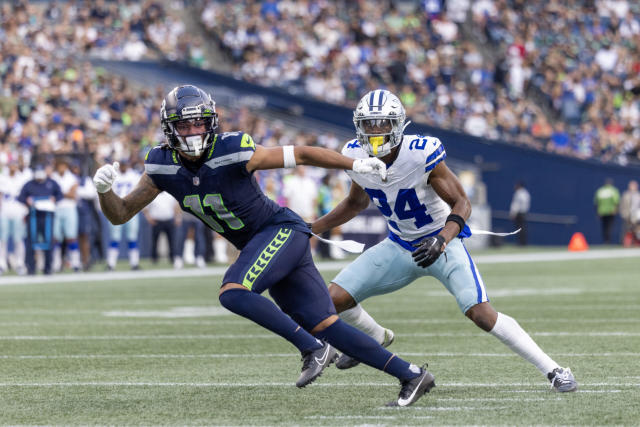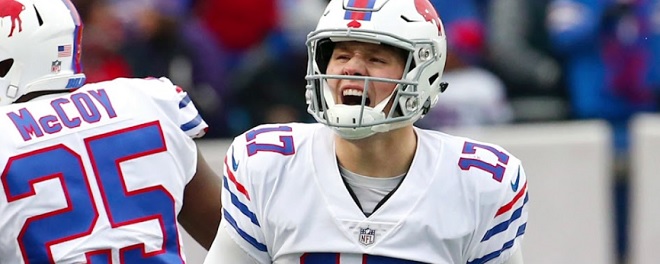Written by John Lindinger (Injured Reserve on the forums). I’ve been in what seems like a million fantasy football leagues with John, and I consider him to be one of my toughest competitors. He will be providing some fantasy insight for this Web site from time to time. You can e-mail John at [email protected].
July 13, 2010.
A Guide to Fantasy Football Draft Strategies
RB-RB:
These drafters are fantasy football’s old guard. They tend to draft reliable, yet unspectacular fantasy squads. This is because they pigeon hole themselves into a strategy that doesn’t allow them to take advantage of elite players falling to them.
They often make a solid value pick in the first round, seeing as the elite running backs represent the best value. However, their second-round selections are often reaches or worse yet, aging recently elite backs who have serious durability issues. The need to stick to their predetermined chart of selections can often lead these owners to value names over production.
To give you a better understanding of the mindset behind this strategy and why so many fantasy players still follow it, you have to boil fantasy football down to the basics. In the end this game comes down to winning. Owners know that their likelihood of winning rises with each time their players touch the ball. Since workhorse backs often see 20-25 carries, and the odd reception, they are clearly the most valuable commodity in fantasy football.
You might think that the recent NFL trend towards committee backs would have eliminated this drafting stratagem, but it has only entrenched owners further by making them view the few remaining workhorse backs as even more valuable.
I am by no means challenging the concept that an elite running back is a prized possession. I also acknowledge that there are plenty of situations where going RB-RB becomes your best move. But, in order to draft well you need to have the willingness to make another choice, in order to understand when the prized running back really is the correct one.
Best Player Available:
The owners who operate under the philosophy of selecting purely by best player available realize the pitfalls of the RB-RB philosophy. However, this realization blinds them from discovering that their draft strategy is far more foolish.
These owners begin their drafts strong. Through the first four rounds their teams appear miles above the competition. After all, Calvin Johnson is a far more flashy selection than Ryan Grant. Taking Ryan Mathews looks like an enormous reach when the BPA drafter takes Tom Brady off the board one selection later in Round 3. But the other members of the league not only close the distance, but surpass the BPA drafter in the middle rounds when they have the luxury of stockpiling talent instead of being faced with the BPA Drafter’s dilemma of deciding whether or not Devin Aromashodu is a passable WR2 (for those of you playing at home – he isn’t).
The Best Player Available strategy is equivalent to declaring that you have no idea what you’re doing. It’s called prior planning; do some, people.
First to Take a Tight End:
Annually, the first tight end selection sends a ripple through the draft room. The puzzled faces of your fellow drafters say it all. Half of the people in the room have smirks on their faces that you know means they wouldn’t have touched your guy for at least another two rounds, while the other half begin wildly flipping their cheat sheets back and forth, seemingly having forgotten that tight ends even existed.
Fantasy experts tend to doom those owners who take a tight end early. Although I usually find myself on their side, this season is an exception. The serious depletion of running back and receiver depth makes Dallas Clark a great selection in the middle of round 4. By Dallas Clark I seriously only mean Dallas Clark. Do not substitute your TE1 of choice and blame me for you sub-par team.
The reason I would not touch any other tight end early in the draft is for precisely the same reason that most owners avoid tight ends altogether. They avoid them because tight ends lack the superstar potential of elite running backs and wide receivers, who pile up high yardage, touchdown and reception totals. Tight ends on the other hand, usually fall into one of two categories. They are either dangerous red-zone threats (see Visanthe Shiancoe) or consistent options in the passing game with little red-zone presence (see Jason Witten and Chris Cooley). Clark is one of the few tight ends who not only breaks this mold, but is also in a dynamic offense that makes him a wise selection.
Note that this strategy is mainly for those owners in PPR formats, who know they could use Clark’s consistency and over 100 reception potential. Considering Reggie Wayne’s weak finish to 2009, I think it is extremely plausible that Clark’s role in the passing game may even be expanded. When 2010 is over I expect Clark to be the new owner of the single season reception record for tight ends (currently standing at 102), and I would not mind being the owner who was along for the ride.
Top Five Quarterback:
The problem with needing to have an elite quarterback on your roster is virtually the same as that of the RB-RB strategy. Your preference for a top quarterback lulls you into sleep during draft day and you take a top quarterback in round 2, without evaluating the running back and receiver talent that has fallen into your lap.
There are drafting positions where taking a quarterback in round 2 is a solid and safe selection, but deciding beforehand that you have to have an elite signal-caller can make you pass on a player who would have brought you a fantasy championship and a year’s worth of bragging rights.
Pre-Draft Tiers (My Fantasy Draft Strategy):
The best advice for fantasy drafters is to make your own rankings before going into your draft. I prefer ranking players into tiers, so that when I am on the clock and need to make a quick selection I can easily recall where I thought the talent dropoff at each position occurred.
By setting up your tiers with a cool head in your pre-draft process, you virtually eliminate the possibility of panicking and selecting a player who is significantly worse than the player taken before him. This can be best explained by going through my top 10 running back rankings.
1. Maurice Jones-Drew
2. Adrian Peterson
3. Ray Rice
4. Chris Johnson
5. Frank Gore
6. Michael Turner
7. Jamaal Charles
8. Ryan Grant
9. DeAngelo Williams
10. Ryan Mathews
Assume you draw the sixth spot in your fantasy draft. The first five picks rattle off, and in no particular order Jones-Drew, Peterson, Rice, Johnson and Gore fly off the board. While you aren’t surprised, you cannot help but be disappointed. Going into the draft you had hoped to land an elite workhorse running back and those players made up your top five.
If you’re drafting off a fantasy magazine, it makes all the sense in the world to simply select Michael Turner. After all, he is a consensus top 10 pick and is your magazines sixth-ranked running back. However, in situations like this your cheat sheets can hurt far more than they help. Turner may be the best back available, but that doesn’t change the fact that he represents a significant dropoff in value from the backs that went before him. He brings zero receiving game to the table, while also not having a very big starting running back resume to judge him on.
By using tier rankings you would look down and instantly see that the sixth spot represented a dropoff in running back talent for you. This allows you to target either the top receiver or even quarterback, if you do not mind selecting one so early.
When Round 1 is finished you will feel much more secure with a superstar like Andre Johnson or Aaron Rodgers on your team, rather than a back with serious question marks. I understand that deciding on this pick may seem simple to many of you reading this. But recognize that this is a simplified example and that setting up tiers will pay huge dividends in the middle rounds when other owners are floundering in attempts to fill their starting rosters, without as much consideration as to the talent that is available.
The first step in your fantasy draft is to employ a best-player-available strategy for Rounds 1 and 2. These are the only two rounds where it is perfectly acceptable, even advisable, to have no plans. You have the rest of your picks to build around these selections; just snag two marquee players and relax.
Rounds 3, 4, 5 and 6 – These are the most important picks of the draft. These picks need to build around your two superstars, or you will be spending week 14 trying to convince yourself that participating in the consolation bracket is not the least bit humiliating.
Your strategy needs to be formed quickly after your second selection. For instance, say you left the beginning rounds with a balanced group of a RB1 and WR1. My best advice is to follow these picks up with either a running back or receiver in Round 3, whichever position has more talent at your pick.
I like to avoid a quarterback in the early rounds for two reasons. The first is that you build invaluable RB/WR depth. The second reason is that there will still be viable starting quarterbacks available in Round 6, whereas your opponents will have to settle with starting Jeremy Maclin or Braylon “Wasted Pick” Edwards. If all else fails, just make sure that you leave Round 6 with at least 2 running backs and 2 receivers.
Rounds 7, 8, and 9 – Make sure to grab a tight end, and establish running back and receiver depth if the value is there. If you did not get an elite quarterback in the early/middle rounds then double up by taking a solid backup quarterback in these rounds. Taking two fringe starter quarterbacks and starting them based on their matchups is risky, but can really pay off if you’re good at stealing the breakout quarterback each year (see Matt Schuab 2009 and Jay Cutler 2008) or are great at analyzing defenses.
Rounds 10, 11, 12, 13 – These rounds are for SLEEPER picks only. Do not draft any mediocre veterans, who are just happy to have a job. These players are worthless. The rule of thumb is that you should not draft someone whose production will never be good enough to start. If you need to start Jericho Cotchery, T.J. Houshmanzadeh or Roy Williams, then your season is already lost. Draft young players with upside and players in new promising situations.
Round 14 and 15 – Contrary to popular opinion you should not wait until the final two rounds to take your defense and kicker. You should only wait until Rounds 14 and 15. It may sound inconsequential, because it is only a one-round difference for each selection. But it actually will improve your team. By drafting your defense in Round 14 you get the jump on all the owners who waited until Round 15. You will end up with a defense that puts up a few more points a game. By taking your kicker in Round 15 you end up with a top-five kicker. Kickers are all pretty much the same, but even a fraction of a point difference in your favor makes this move worth it.
Round 16 – Even though you postponed this pick until the last round, you will likely get the same player you would have in Round 14. Drafters are always horrified about their sleepers being stolen, but rarely does anyone agree on the same young athletes. So your picks should be safe. Remember that this pick is your Hail Mary. Make sure it has the potential to be a highly rewarding pick; not some useless handcuff you are guaranteed to drop by mid-season.
More 2010 Fantasy Football Articles:
2010 Fantasy Football: Home
2010 Fantasy Football Rankings:
2010 Fantasy Football Playoff Rankings - 1/5 (Walt)
2010 Fantasy Football: Week 17 Fantasy Rankings - 1/2 (Walt)
2010 Fantasy Football Rankings: Quarterbacks - 8/31 (Walt)
2010 Fantasy Football Rankings: Quarterbacks - 6/6 (Steve)
2010 Fantasy Football Rankings: Running Backs - 9/6 (Walt)
2010 Fantasy Football Rankings: Running Backs - 7/3 (Steve)
2010 Fantasy Football Rankings: Wide Receivers - 9/7 (Walt)
2010 Fantasy Football Rankings: Wide Receivers - 7/14 (Steve)
2010 Fantasy Football Rankings: Tight Ends - 8/31 (Walt)
2010 Fantasy Football Rankings: Tight Ends - 7/20 (Steve)
2010 Fantasy Football Rankings: Kickers - 6/10 (Walt)
2010 Fantasy Football Rankings: Defenses - 6/11 (Walt)
2010 Fantasy Football Auction Values - 9/2 (Walt)
2010 Fantasy Football Rankings: IDP Defensive Linemen - 8/3 (Steve)
2010 Fantasy Football Rankings: IDP Linebackers - 8/7 (Steve)
2010 Fantasy Football Rankings: IDP Defensive Backs - 8/14 (Steve)
2010 Fantasy Football Rankings: Team-by-Team - 6/7 (Walt)
2010 Fantasy Football Rankings: Dynasty Rookie Rankings - 4/30 (Walt)
2010 Fantasy Football Rankings: Rookie Rankings - 4/29 (Walt)
2010 Fantasy Football Cheat Sheets:
2010 Fantasy Football Cheat Sheet: Top 150 Traditional - 9/6 (Walt)
2010 Fantasy Football Cheat Sheet: Top 150 PPR - 9/6 (Walt)
2010 Fantasy Football Cheat Sheet: Top 150 Touchdown League - 9/6 (Walt)
2010 Fantasy Football Rankings: Downloadable Spreadsheets - 9/7 (Walt)
2010 Fantasy Football Mock Drafts:
2010 Fantasy Football Draft: WF.com Free League - 9/7 (Walt)
2010 Fantasy Football Draft: Real Traditional Draft - 9/1 (Walt)
2010 Fantasy Football Draft: Real PPR Draft - 8/26 (Walt)
2010 Fantasy Football Draft: Real PPR Draft - 8/18 (Walt)
2010 Fantasy Football Draft: Real Experts PPR Draft - 8/12 (Walt)
2010 Fantasy Football Experts Mock Draft - 8/12 (Walt)
2010 Fantasy Football Draft: Pros vs. Joes - 7/28 (Walt)
2010 Fantasy Football Mock Draft: PPR Draft with AKA - 7/20 (Walt)
2010 Fantasy Football Mock Draft: Mocking ESPN's Fantasy Mock Draft - 7/7 (Walt)
2010 Fantasy Football Mock Draft: The Four-Man PPR Fantasy Draft - 7/1 (Walt)
2010 Fantasy Football Articles:
2010 Fantasy Football Injury Reports: Week 17 - 1/2 (Walt)
2010 Fantasy Football: Start Em, Sit Em - 12/29 (Walt)
2010 Fantasy Football: Add/Drop - 12/20 (Walt)
2010 Fantasy Football: Stock Index - Week 8 - 10/29 (John)
2010 Fantasy Football Buffet: Week 8 - 10/28 (Steve)
2010 Fantasy Football Stock - 9/7 (Walt)
2010 Fantasy Football Preseason Stock - 9/3 (Walt)
2010 NFL Preseason Recap, Fantasy Football Notes - 9/3 (Walt)
2010 Fantasy Football: High-Upside Late-Round Sleepers - 8/25 (Walt)
2010 Fantasy Football: Top 12 Players to Avoid - 8/25 (Walt)
2010 Fantasy Football: Undervalued Players - 8/13 (John)
2010 Fantasy Football: Buy Low - 8/6 (Walt)
ESPN's 2010 Fantasy Football Magazine Errors - 8/3 (Walt)
2010 Fantasy Football: Defense Strategy - 8/2 (Walt)
2010 Fantasy Football: My Round-by-Round Strategy - 7/27 (Walt)
Lack of 2010 Fantasy Depth: Blame the 2008 NFL Draft Class - 7/26 (John)
2010 Fantasy Football: Why You Should Pass on Chris Johnson - 7/14 (John)
2010 Fantasy Football: Draft Strategies - 7/13 (John)
2010 Fantasy Football: Wide Receiver Scarcity - 6/30 (Walt)
2010 Fantasy Football Sleepers (Late-Round) - 6/2 (Walt)
2010 Fantasy Football Sleepers (Mid-Round) - 6/1 (Walt)
2010 Fantasy Football Busts - 5/31 (Walt)
2010 Fantasy Football Mailbag - 5/29 (Walt)
2010 Fantasy Football: Quarterbacks with New Receivers - 5/1 (Walt)
2010 Fantasy Football: 2010 NFL Draft Stock Up - 4/29 (Walt)
2010 Fantasy Football: 2010 NFL Draft Stock Down - 4/29 (Walt)
2010 Fantasy Football: Free Agency Stock Up - 4/15 (Walt)
2010 Fantasy Football: Free Agency Stock Down - 4/12 (Walt)
Running Backs with Most Carries - 4/10 (Walt)
NFL Picks - Dec. 5
2026 NFL Mock Draft - Dec. 3
NFL Power Rankings - Dec. 1
Fantasy Football Rankings - Sept. 1



